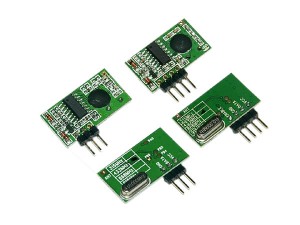How to buy money for nothing (Endwave)
Montier, in his Value Investing, spoke of the folly of looking at the price/sales ratio, which, considering the variety of earnings margins and capital structures, makes companies more or less incomparable with each other. He described it as nothing more than a transparent attempt to go up the income statement until the company looks good. Bon-Ton department stores would be a good example of what he means; their price/sales ratio is 0.08, but because their operating earnings go almost entirely to interest, the ratio is useless, and in fact worse than useless because it makes a company look better than it is.
But Montier’s example is a little more extreme. He suggests that a company that sells $100 bills for $95 apiece would have the highest price/sales ratio in the world. Of course, you can’t find such a business that actually does such a thing, although certain mortgage lenders have organized their business plan under similar principles.
But if you can’t get such a deal from the company, maybe you can get it from the people who own the company. Value investing is said to involve buying a dollar for 50 cents, and on rare occasions that is literally the situation that an investor faces.
 Endwave Corporation (ENWV) is a manufacturer of RF modules, and carries on their balance sheet $19 million in cash, $11 million in short-term investments, and $3 million in receivables, and $4 million in liabilities, total $29 million (there are $5 million in inventories and a little over $2.5 million of property and “other” as well). The company’s market cap as of this writing is $26 million, meaning that the company is selling for less than the cash inside it, and the rest of the assets inside are just a bonus.
Endwave Corporation (ENWV) is a manufacturer of RF modules, and carries on their balance sheet $19 million in cash, $11 million in short-term investments, and $3 million in receivables, and $4 million in liabilities, total $29 million (there are $5 million in inventories and a little over $2.5 million of property and “other” as well). The company’s market cap as of this writing is $26 million, meaning that the company is selling for less than the cash inside it, and the rest of the assets inside are just a bonus.
Of course, few stocks sell for less than their net cash by chance alone, and Endwave is no exception. The company, it must be admitted, is not profitable. A large contributor to the situation is research & development expenditures which, properly speaking, should be treated more like capital expenditures than an out-and-out loss. Furthermore, the firm did take $2.4 million in restructuring charges last year, but even taking the most optimistic assumption possible, that their R & D did not amortize at all last year and that the restructuring is wholly nonrecurring, the firm still reported a loss of $3 million last year, so it is to be hoped that the savings from the restructuring are substantial.
However, what I find interest is that Endwave did recently take the curious step of redeeming all of its preferred stock for $36 million. The preferred stock was convertible into 3 million shares of common stock (worth about $8.1 million based on yesterday’s price), but had a liquidation preference of $45 million. The preferred stock paid no dividend, so it’s not as if there was any motive to preserve cash flow, so when a company redeems its preferred shares for no apparent reason other than saving its shareholders $9 million, I have to suspect that they’re up to something.
Leave a Reply